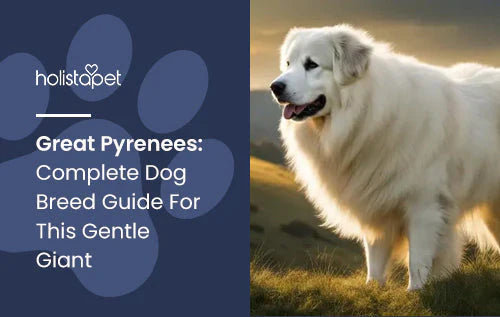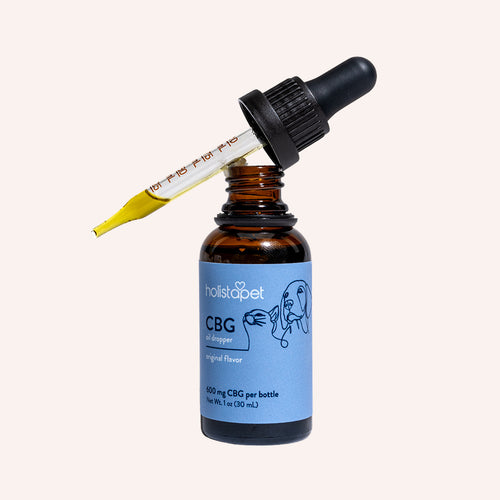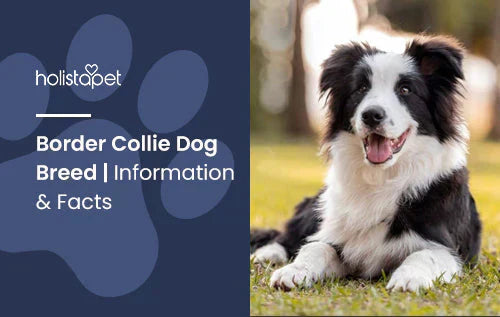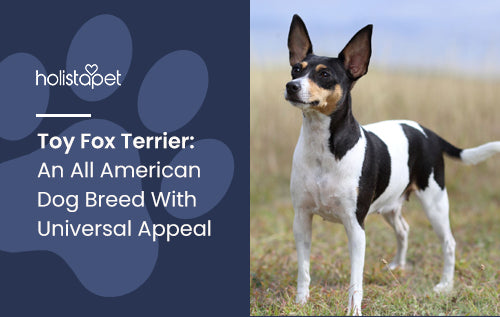When you think of a big dog breed which one comes to mind? If you picture a large, fluffy white dog the size of a bear, that's the Great Pyrenees! The Great Pyrenees is known for its immense size and imposing presence. But despite its stoic appearance and initial attitude, this dog is known as a lovable and gentle family dog.
While this dog is a powerful working dog with a durable coat, they love just lounging around and spending time with you. The Great Pyrenees has a few requirements to live a happy life. Find out if this breed of dog is right for you and your family!
Great Pyrenees Characteristics (Physical)
The American Kennel Club describes the Great Pyrenees as elegant and having "unsurpassed beauty." The dog is large and majestic with an intelligent, regal expression. But while graceful, the Great Pyrenees is built to guard the flock in any weather condition.
Great Pyrenees Dog Breed Size
This is considered a large dog breed, with females being 25 to 29 inches and males ranging from 27 to 32. Male Great Pyrenees will even reach 100 pounds or more!
Body
This is a balanced dog with a moderately broad chest, a well-sprung rib cage, and a level backline. They have well-muscled front legs with strongly muscled thighs on the back legs. For their overall health you can provide them Holistapet's CBD Products.

Legs
The Great Pyrenees has straight, vertical legs that are balanced with their body, with sufficient bones and muscles. Their front feet are rounded and well-padded. The back paws actually have double dewclaws, which is very rare, and arched toes. Double dewclaws are only found in working dogs that need extra support when navigating challenging terrain, like mountains. The Great Pyrenees walks elegantly with power and agility. They move easily with a good reach and strong drive.
Tail
This breed's well-plumed tail is carried low. When your dog is excited, however, the tail becomes arched over the back. The American Kennel Club describes this as "making the wheel" in the breed standards.
Head
The dog's neck is strongly muscled with a balanced head that's held high. This breed will look contemplative and intelligent, with dark brown eyes that are medium-sized and almond-shaped. Their ears are small and V-shaped with rounded tips.
Great Pyrenees Personality
The Great Pyrenees is seen as a capable and loyal guardian. This loving dog is gentle, calm, and well-mannered with its family. Some people even describe this breed as "serious," although they do have an affectionate side. This breed is wary of strangers. They don't hesitate to protect their family and their territory. Known to bark when acting as a guard dog, the Pry can be an imposing and intimidating dog when it needs to be.
But don't leave this breed outside. While the Great Pyrenees appears tough and can withstand most weather conditions, they are happiest when spending time with their family. Without proper socialization or family time, the Great Pyrenees can become destructive and display aggressive canine behavior, especially with strangers. Instead you can use best dog toys for dog's happy playful time.

The Great Pyrenees loves spending calm, quiet family time with loved ones. You'll notice that they love lounging on the floor or beside you on the couch while you watch television. They might even lay their head on your lap while you're working.
You'll notice an independent streak as well. The Great Pyrenees used to work alone, guarding sheep and other livestock. This can sometimes make the Great Pyrenees have a mind of its own, so you will need to be a consistent and confident leader to earn this breed's respect.
Great Pyrenees Dog Breed Exercise
What is Great pyrenees paw size? Despite this dog's large size, the breed surprisingly doesn't need an extensive amount of exercise. It's often recommended to give these pups a minimum of 20 to 30 minutes of exercise per day, although 60 is always ideal for any dog.
You can walk the Great Pyrenees in any weather, rain or shine. You'll notice they especially love hikes in nature, although walks around the city will also give them the stimulation they need. Provide your Great Pyrenees with various toys, especially ones that require extra thinking or interaction. This could be a puzzle with food inside or a rope that you pull on with them.
This breed also loves having a purpose. Games like fetch or even organized sports like agility will interest this dog. But don't expect them to be as quick and energetic as dogs that thrive in agility, like Border Collies. This should be done specifically for fun and to get outside!

Great Pyrenees Training
The Pry has a strong independent streak. This can sometimes lead to the Great Pyrenees being disobedient or ignoring commands. Some fans of the breed joke that "come" is only a request for most Great Pyrenees! This is not a breed for new owners, who may find it difficult to control the Great Pyrenees. They require someone strong and able to be a good leader.
Starting Early
Of course, it all starts when the Great Pyrenees is a puppy (or pupper, if you will). Obedience courses and dog socialization classes will give your dog a great foundation. But you also need to pick up some tips for how to consistently train your dog. So the classes are essential in training families too!
So how can you become a good leader? You must establish that you are the one taking the lead. The Great Pyrenees doesn't want to overtake you. They just want to establish themselves as the leader if there are no leaders present in the household. Make it clear that you are the boss in everyday life.
Show Them Who's Boss
Teach your puppy early on that you are the one who controls the resources. This includes food, treats, attention, and toys. Feed yourself before your dog. Make your dog sit and watch you for every treat and meal, using commands like "watch me."
Make your dog sit before putting on their leash or letting a visitor inside the home. Your dog must not be allowed on the couch or bed unless you invite them up. And always go through the door before your dog.

Your Great Pyrenees should also be crate trained. This gives your dog a secure and safe space to view as their "den." Never make this crate a punishment. This is where your dog will go when left alone in the home or when they want to hide from a thunderstorm.
The Great Pyrenees also responds well to clicker training. They'll quickly learn that positive responses and actions will lead to a treat or affection. This further shows the Pry that you are the one in control and that you are the one to please. Your dog will respect you and feel a lot more secure when they know you have this kind of control and consistency.
Great Pyrenees Dog Breed History
The Great Pyrenees has been around for a while, starting as a flock guardian dog. Even fossil evidence shows that these dogs have been around during ancient times, including a dog depicted in the Bronze Age (1800-1000 BC).
Its most well-known ancestors were large white dogs that existed in Asia Minor around 10,000 BC. Shepherds brought their sheep to the Pyrenees Mountains a bit later, around 3000 BC, bringing their flock dogs with them. The Pry remained successful flock guarding dogs for several centuries.
Other areas of the world took notice of the large, majestic dog. Medieval France used the Great Pyrenees as a fortress guard. French nobles caught on in the late 1600s, and they became very prized by Louis XIV. The Great Pyrenees then made their way to Newfoundland. They became a big part of the creation of another breed, the Newfoundland. The first record of a Pyr coming to America was in 1824.
Despite the Pry's initial popularity in France, the breed was almost gone from French court life by the 1900s. Tourists bought the remaining puppies and brought them back to England. But they didn't resemble the large and regal dogs from before, causing popularity to dwindle in England as well.
But dog fanciers saw the dog breed's potential. There were still noble Great Pyrenees in their native mountain land, which became the foundation of the modern Pyrenees. In the 1930s, American breeders started further refinement of the breed. This led to American Kennel Club recognition in 1933. The Pyr has become a beloved pet throughout the US (and the world) thanks to its kind personality and potential as a guard dog.

Common Health Problems
Like all purebred dogs, the Great Pyrenees has the potential to develop a variety of health problems. These are inherited similarly to how people inherit diseases. But it's important to remember that reputable and trustworthy breeders will test their dogs for these conditions and remove dogs that carry them from their breeding pool.
Breeders should also be able to provide health guarantees for your puppies. The puppy's parents should have a good hip and elbow score from the Orthopedic Foundation for Animals and proof of eye health from the Canine Eye Registry Foundation.
Here are some of the most common health issues that the Great Pyrenees breed may develop:
Hip Dysplasia
This is a common skeletal condition in large or giant dog breeds. It affects the hip joint, which functions as a ball and socket. The ball and socket don't fit or develop properly when dogs have hip dysplasia, causing them to rub and grind instead of smoothly sliding. This leads to deterioration. If not treated, hip dysplasia can eventually cause the dysfunction of the joint itself. For keeping your dog's joint healthy you can provide them best joint mobility treats.
Dogs are more likely to get hip dysplasia if they grow quickly, exercise a lot, or are overweight. Bad nutrition can also make it more common. Look for limping and lethargy. If you suspect your dog has hip dysplasia, contact a veterinarian immediately. Catching this disease early on can prevent lameness.
Heart Problems
Larger dogs are more prone to heart problems due to their size. An example is Tricuspid Valve Dysplasia, a heart defect that is a malformation of a valve in the heart. This leads to a backflow of blood, which can eventually enlarge the right side of the heart. When the heart enlarges, congestive heart failure can occur. Fluid will accumulate within the abdominal or chest cavity.
As a puppy, a routine vet visit will reveal a heart murmur. This is the first indication. Older dogs may develop an irregular heart rhythm. Medical therapy will improve quality of life, and procedures can remove the excess abdominal fluid.
Also, CBD Products helps in maintaing good heart health. Shop the best with holistapet!
Osteosarcoma
Osteosarcoma is a tumor of the bone. It's caused by the abnormal production of cells that break down bone. The long bones in your dog's arms and legs are most commonly affected, although bones in the jaw, hips, or pelvis can also develop tumors.
Eye Problems
Persistent pupillary membranes, progressive retinal atrophy, and cataracts are examples of common eye problems in Great Pyrenees dogs. PMP is a condition of the eye that occurs when remnants of a fetal membrane form strands of tissue across the pupil.
Progressive retinal atrophy is the wasting away of a body part, with cells in the eye deteriorating over time. Your dog will eventually become blind. Cataracts develop as dogs age, creating a cloudy film over the eye's lens. This keeps light from entering. You'll see a cloud-like substance in their eye's lens, caused by proteins clumping together.
Kneecap Dislocation
This condition is similar to hip dysplasia; larger dogs can often get leg and joint issues if they grow too fast or exercise a lot. Overweight dogs can especially get these types of conditions due to the extra pressure on their limbs. Always keep an eye on your dog's gait and how they get up when laying down.
Bloat
This condition is most common in larger dogs that have deep chests. Bloat occurs after a dog eats, causing their stomach to expand. This can lead to gas or an upset stomach. Bloat can even become life-threatening, blocking blood flow to the stomach.

How to Care for a Great Pyrenees
The Great Pyrenees is a family-oriented dog that needs to be in a home where they can spend time with people each day. If you work long hours each day or travel constantly, this breed isn't the best fit. While independent, the Great Pyrenees loves spending time with family, usually low-key activities.
You'll notice they are often more active at night. This is because their ancestors stood watch of sheep at night. They would love to play with you during the later hours, so if you're a person who stays up late at night, this dog breed will be for you.
But this doesn't mean the Pyr never wants to be outside! In fact, this breed loves the cold weather and snow especially. They are more comfortable in cooler weather due to their hefty coat. They'll love romping around in the snow, and they might never want to come inside!
The Great Pyrenees thrives in country settings, usually on a farm or a ranch. They love having a large yard they can roam in. But just remember to make sure it's securely fenced in. This dog breed is known to roam, so you need to make sure they have no way to escape. This dog should also consistently be kept on a leash if you hike or go to a walking trail.
Nutrition and Feeding for a Great Pyrenees
As you've probably realized by now, this breed is quite large. They need more food than the average dog. Feed them about four to six cups of high-quality dry food a day. Ensure that their diet is balanced, with trusted protein sources, carbs to fuel exercise, and nutrients and vitamins.

It's very important to keep in mind that the Great Pyrenees should have their daily intake cut in half. This means give them half their daily food in the morning as breakfast and then half at night. This will make it less likely for your dog to bloat since this more commonly happens after large meals. After eating:
- Ensure that your dog takes time to rest.
- Never play with them right after they eat.
- Give them time to digest.
Coat Color And Grooming
The Great Pyrenees is most popular for its large, white coat. You'll sometimes see gray or reddish-brown spots, but it should be overall white. The markings (usually on the head) should never be more than one-third of their coat.
The Pry has a double coat, a topcoat, and an undercoat. The topcoat is long and thick. It can be short in texture and is straight or slightly wavy. They have an iconic mane or ruff around the neck (more pronounced in males), giving them their regal look. The tail has a hefty plume. The undercoat should be dense and woolly.
The Great Pyrenees is a heavy shedder, which comes as no surprise. In even warmer climates, they will shed even more often. If you own a Pyr, you should expect white hairs all over your furniture, floor, clothes, and car. Despite the shedding, the Pyr is easy to groom. Most owners only groom their Pyr 30 minutes per week. Don't clip the Pyr's hair when it's hot. Their coat keeps them cool and also protects them from the sun.
Bathing
Baths are infrequent. They only need a bath once every couple of months. Ensure the dog shampoo you use is high-quality to avoid stripping natural oils from the dog's coat and skin. Trim their eyebrows, ears, feet, hocks, and forelegs if needed (usually for a show).
Check your dog's ears once a week for dirt or redness. Wipe them out with a cotton ball dampened with a pH-balanced ear cleaner. This will prevent ear problems like infection. This is important for the Great Pyrenees since their floppy ears can sometimes block air circulation.

Brush your dog's teeth at least two or three times a week. This will remove tartar buildup, avoiding gum disease and bad breath. You can also trim their nails regularly when you start hearing them click on the floor.
Children And Other Pets
The Great Pyrenees is a gentle dog that's known to be especially loving and sensitive around children. They are also calm and well-mannered, meaning they can put up with a bit of poking and prodding from children. But you should always supervise your dog's interactions with younger kids.
The Great Pyrenees is a bit standoffish with people and pets they don't know. They can sometimes view strange dogs as a threat to their family and may become aggressive. They might also chase away cats. But the Great Pyrenees is known to be excellent with family cats, even protecting them. This calm and serious dog is great with smaller animals, small dogs, and children within their household. They are known as great family pets.
Great Pyrenees Dog Rescue Groups
The Great Pyrenees is a loving dog that is often calm and loyal. But with less experienced dog owners, it can sometimes be difficult to get this breed to listen to commands. When not trained correctly, the Great Pyrenees can be stubborn and strong-willed. They may also be aggressive with guests and strange dogs.
People who give up their Pyr will bring them to specialized rescues. One example is the National Great Pyrenees Rescue, a volunteer non-profit organization with the goal to save and re-home Great Pyrenees all over the United States and Canada. The organization was formed in 2006 and has rescued over 10,000 Pyrs since then. They provide advice for Great Pyrenees adopters that want to know more about the breed and support owners after the adoption process as well. They also support other rescue groups.

There are smaller Great Pyrenees rescues that target certain areas of the nation, including the Great Pyrenees Association of Southern California and the Great Pyrenees Rescue Society.
Great Pyrenees Dog Breed Organizations
Dog breed organizations exist to support the education and standards of the Great Pyrenees. The Great Pyrenees Club of America was founded in the 50s and is recognized by the American Kennel Club.
"The Great Pyrenees Club of America not only furthers the sport of dogs, it also does all possible to bring the natural qualities of purebred Great Pyrenees to perfection. The Club promotes and protects dogs, sponsors educational programs, provides breed information, and publishes a club magazine, the GPCA Bulletin. The GPCA has a referral service that provides information on the location of responsible member breeders. In addition, the GPCA also has a network of national rescue volunteers, who place Pyrs in need of new homes," reads the club's website.
There are events all over the United States that celebrate what makes the Pyr unique, from agility-type tournaments to dog shows and gatherings for owners of this majestic breed.
More About this Breed
The Great Pyrenees has always been a respected dog throughout history, revered for its noble appearance and advanced flock guarding abilities. We said that Louis XIV loved the dog breed. But did we say that the Great Pyrenees was decreed the "Royal Dog of France" by the king in 1675? And it wasn't only France's royalty that loved having this majestic breed around. Queen Victoria of England was also a proud Pyr owner in the mid-19th century.
Whether you know theis dog as the Pyrenean Mountain Dog (UK), the Le Grande Chien de Montagnes (French for "the big dog of the mountains"), or Le Chien des Pyrenees (French for "the dog of Pyrenees), this is a popular dog breed all over the world thanks to its devotion, loyalty, and well-mannered behavior in the home. If you're looking for a dog that will love your family and make you feel protected, the Great Pyrenees is for you.



 CBD Oil for Dogs - Fast Acting
CBD Oil for Dogs - Fast Acting
 Chicken Flavored CBD Oil For Dogs - Easy Dose
Chicken Flavored CBD Oil For Dogs - Easy Dose
 Salmon Flavored CBD Oil For Dogs - Highly Rated
Salmon Flavored CBD Oil For Dogs - Highly Rated
 CBG Oil for Dogs and Cats - Loved by Thousands
CBG Oil for Dogs and Cats - Loved by Thousands





Leave a comment
All comments are moderated before being published.
This site is protected by hCaptcha and the hCaptcha Privacy Policy and Terms of Service apply.